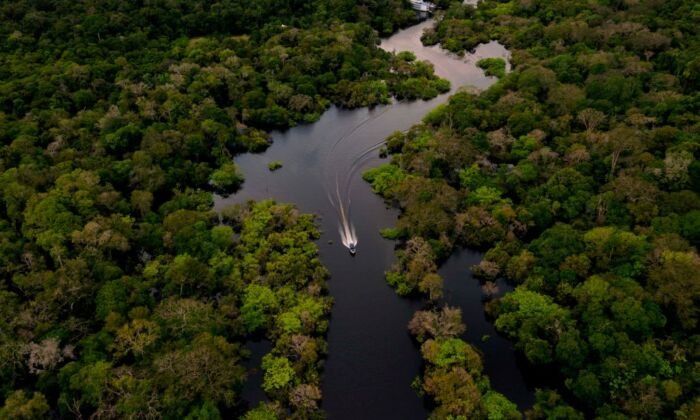Enormous Anaconda Unearthed in Amazon Rainforest
Our team was fortunate to be invited to explore the region and discovered several anacondas in the shallows, waiting for prey.
A new type of giant anaconda with a head the size of a human has been discovered by a team of scientists embedded with a television crew filming a new show featuring a Hollywood superstar in a remote part of the Ecuadorian Amazon.
Professor Bryan Fry from the University of Queensland was part of a team that was invited to the Bameno region of Baihuaeri Waorani Territory by the area’s indigenous people to study and collect specimens of a population of anaconda that are believed to be among the world’s biggest.
The now-named Northern Green Anaconda (Eunectes akayima) was discovered by the scientific team during filming with National Geographic for their upcoming series starring the U.S. actor Will Smith.
The authors of a report published today from MPDI Diversity named “Disentangling the Anacondas: Revealing a New Green Species and Rethinking Yellows,” included Professor Fry, anaconda expert Jesus Rivas, and Dutch TV wildlife broadcaster Professor Freek Vonk.
Professor Fry called the find “The highlight of my career.” He reported that his team paddled canoes into a remote area where they came across the snakes—rumoured to be the largest in existence.
“The indigenous hunters took us into the jungle on a 10-day expedition to search for these snakes, which they consider sacred. (We) were lucky enough to find several anacondas lurking in the shallows, lying in wait for prey.”
Professor Fry was astounded by the size of the serpents, with one female anaconda measuring a remarkable 6.3 meters long. There are reports of other anacondas in the area measuring more than 7.5 meters long and weighing around 500 kilograms, according to the Waorani people.

Closely related to the Southern Green Anaconda, Professor Fry said the Northern Green bifurcated nearly 10 million years ago and is genetically distinct.
After running the genetic data, they found a clear divide between anacondas sampled in the northern part of the range as opposed to those in the south. And based on those findings, they proposed renaming the snakes found in the north as the Northern Green Anaconda (Eunectes akayima), while E. murinus will continue to refer to southern green anacondas.
“Deforestation of the Amazon basin from agricultural expansion has resulted in an estimated 20-31 percent habitat loss, which may impact up to 40 percent of its forests by 2050,” said Professor Fry.
“Another increasing problem is habitat degradation from land fragmentation, led by industrialized agriculture and heavy metal pollution associated with mining activities.
“Forest fires, drought, and climate change are also notable threats.”






